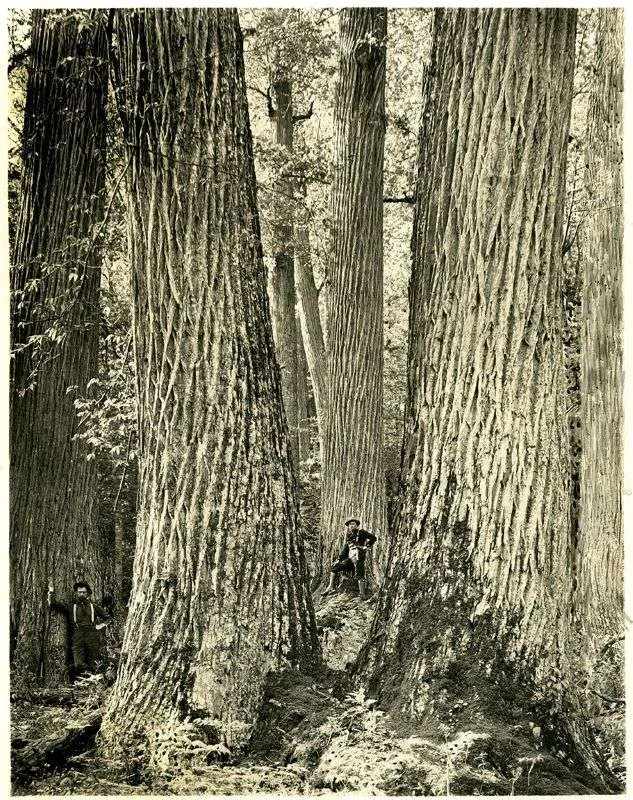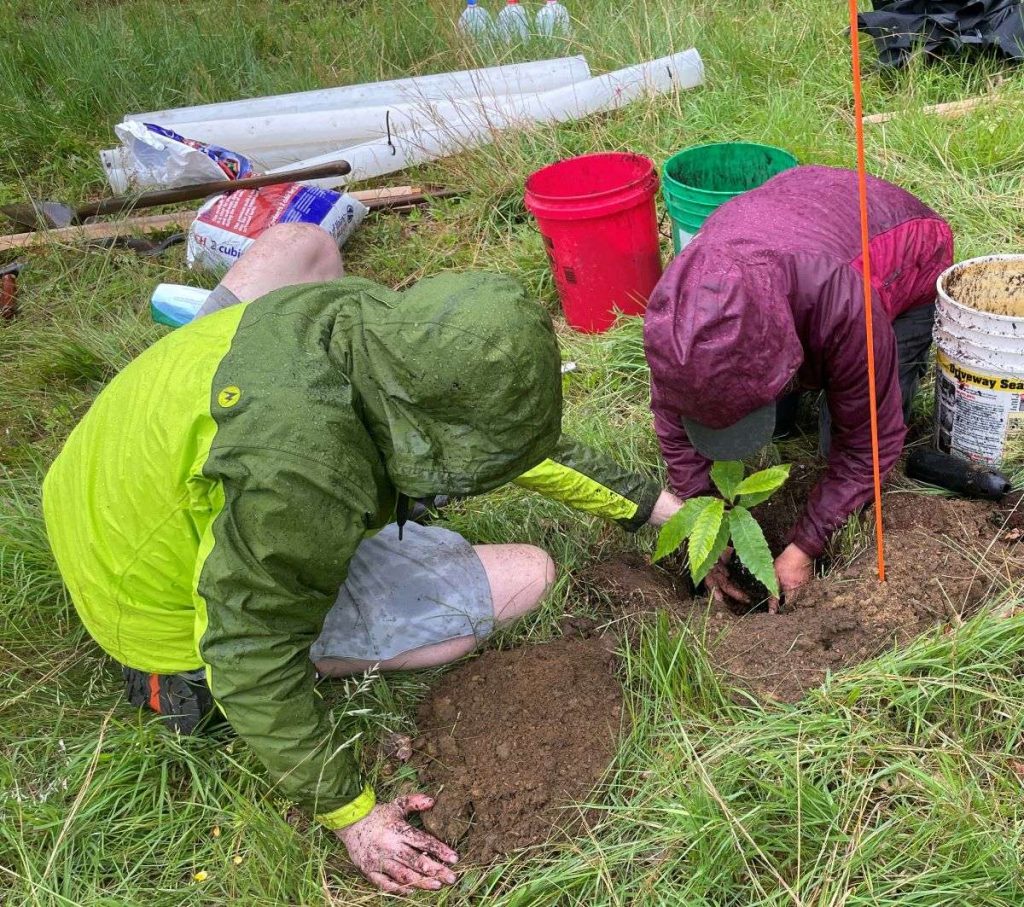Mousam Way Land Trust Works to Restore American Chestnut
- June 14th 2024
- Nature

Large American chestnut trees from the late 19th century
Photo: Courtesy of The American Chestnut Foundation
By Lawrence Furbish
In the summer of 1904, the chief forester of the Bronx Zoo in New York City noticed brown leaves in mid-summer on the majestic American chestnut trees lining the zoo’s walkways. By 1905, the disease was observed in a number of other locations, and in 1906, the assistant curator of the New York Botanical Garden was writing about a new epidemic that was threatening to destroy chestnut trees. Further research identified a fungus that was most likely brought into the states accidentally on imported Asian trees. The blight spread rapidly, and in short time trees were dying from Maine to Georgia.
The chestnut was a much-prized tree in early America for its nuts, which fed people and livestock, and its firm, straight-grained wood that was very resistant to moisture. It was used in construction of houses and barns, for fences, and to fuel illegal stills because it produced the smallest amount of smoke that might alert federal revenuers. Sometimes called “the redwoods of the East,” American chestnut trees grew to 100 feet tall and 14 feet in diameter.
Restoration efforts began as early as the 1930s and are ongoing to this day. The American Chestnut Foundation (TACF) has worked to develop hybrids and is using gene manipulation to develop varieties that are resistant to the blight. So far, complete success has eluded them, but progress has been made.
The Maine Chapter of TACF is working with land trusts around the state to establish small chestnut tree plantations to grow a variety of trees in different locations, not only to test their blight resistance but also to preserve their genetic diversity. This past Sunday, members of the Mousam Way Land Trust worked with a Maine member of TACF to plant 10 American chestnut seedlings — six at the Virginia Morin Preserve on lower School Street and four at the trailhead of the Lowd Reserve on Oak Street in Springvale. The seedlings are from a variety of sources, from Virginia to Mt. Agamenticus.

Sam Parady (MWLT) and Lea Sewell (TACF) plant seedlings.
Photo: Don Jamison
Another chestnut plantation was established in Sanford about 10 years ago by Dr. Bud Johnston and a group of Boy Scouts on McDougal Orchards property, but it is accessible only on a dirt road through some woods. Because these new plantings are adjacent to major streets, it will be easy for interested people to view and check the progress of the trees.






